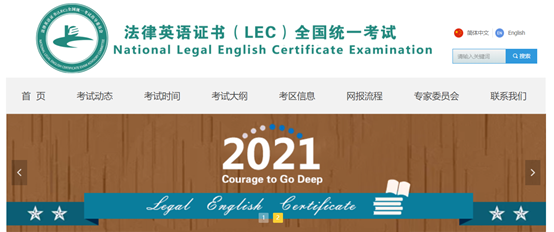选举人团制度(Electoral College)翻译 1
以下为英文素材,由胡晓凡、汤文华提供翻译,欢迎大家参与交流!
因篇幅较长,分多期为大家呈现。【原文转载于“LEC法律英语考试资讯”微信公众号 】
2020 U.S. Presidential Election
在2020年美国大选中,民主党候选人乔·拜登(Joe Biden)首先获得当选所需的270张选举人票,顺利成为下一届美国总统。根据《美国广播公司新闻网》,截止到12月4日,拜登共拿到306张选举人票,特朗普有232票。
为什么拜登拿下270票后,媒体纷纷称其为“当选总统”(President-elect)?这是由美国的总统选举制度——选举人团(electoral college)决定的,下面将同大家一起了解一些美国的“选举人团制度”。
【以下为英文素材,由胡晓凡、汤文华翻译;因篇幅较长,将分多期为大家呈现】
#
选举人团 v. 普选
Americans who go to the polls on Election Day don't actually select the President directly.
在选举日当天投票的美国公民,实际上并没有直接选出他们的总统。
They are technically voting for 538 electors who, according to the system laid out by the Constitution, meet in their respective states and vote for President and Vice President. These people, the electors, comprise the Electoral College, and their votes are then counted by the President of the Senate in a joint session[1] of Congress.
依据美国宪法中规定的制度,美国公民投票选出538名选举人,由这538位选举人在他们居住的州为总统和副总统投票。这些有选举权的人组成了选举人团,他们的选票由参议院议长在国会联席会议上计票。
Why did the framers choose this system? There are a few reasons: First, they feared factions and worried that voters wouldn't make informed decisions. They didn't want to tell states how to conduct their elections. There were also many who feared that the states with the largest voting populations would essentially end up choosing the President. Others preferred the idea of Congress choosing the President, and there were proposals at the time for a national popular vote[2]. The Electoral College was a compromise.
为什么美国的制宪者选择这一制度?有以下几个原因:第一,他们害怕不同州之间形成派系,担心投票者没有做出知情决策。他们不想指导各个州如何进行选举。此外,还有很多制宪者担心,投票人数最多的州最终从实质上决定了总统人选。其他制宪者倾向于让国会选举总统,当时有人提议进行全国普选。最终,选举人团制度成为一项折衷的选择。
The stain of slavery is on the Electoral College as it is on all US history. The formula for apportioning congressmen, which is directly tied to the number of electors, relied at that time on the 3/5 Compromise[3], whereby each slave in a state counted as fraction of a person to apportion congressional seats. This gave states in the South with many slaves more power despite the fact that large portions of their populations could not vote and were not free.
如同奴隶制是美国历史上的污点一样,奴隶制也是选举人团制度的污点。按比例分配国会议员的准则直接与选民人数挂钩,在当时基于3/5妥协,即一个州的每个奴隶都在分配国会议员席位时算作一个人的一小部分(每个奴隶被算作五分之三个人)。这赋予了奴隶众多的南方各州更大的权利,尽管在这些州中,大部分人口没有人身自由,不能投票。
[1] Joint Session:联席会议。事实上,国会联席会议在华盛顿是相当罕见的。在联席会议期间,众议院和参议院的成员聚集在众议院听取客座发言人的讲话。会议传统上在众议院举行,因为会议室更大,可以容纳更多的人。
[2] Popular vote: 普选,公民直接投票
[3] the 3/5 Compromise: 五分之三妥协,是1787年美国南方与东北方在美国制宪会议中达成的协议,由詹姆士·威尔森和罗杰·谢尔曼所提出。该妥协将奴隶的实际人口乘以五分之三,以作为美国众议院成员分配与税收分配的用途。
#
选举人团制度如何运作
There's an elector for every member of the House of Representatives (435) and Senate (100), plus an additional three for people who live in the District of Columbia.
对于美国的每位众议员(435)和参议员(100)的选举,都有一位选举人,此外,还有华盛顿特区的3位选举人。
Each state gets at least 3 electors. California, the most populous state, has 53 congressmen and two senators, so they get 55 electoral votes.
每个州至少有三个选举人席位。人数最多的加利福尼亚州,有53位众议员和2位参议员的选举人席位,因此总共有55张选举人票。
Texas, the largest reliably Republican-leaning state, has 36 congressmen and two senators, so they get 38 electoral votes.
得克萨斯州,作为倾向于共和党的最大的州,有36位众议员和2位参议员,因此总共有38张选举人票。
Six states -- Alaska, Delaware, Montana, North Dakota, Vermont and Wyoming -- are so small, population-wise, that they only have one congressperson apiece, and the lowest possible three electoral votes. The District of Columbia also gets three electoral votes. Voters in Puerto Rico and other non-state territories get no electoral votes, although they can take part in presidential primaries.
阿拉斯加、特拉华、蒙大拿、北达科他、佛蒙特和怀俄明六个州因为人口过于稀少,每个州仅有一位众议员,因此这些州的选举人票低至三张。华盛顿特区也有三张选举人票。波多黎各和其它并非州的美国领土选举者可以参与总统初选,但没有选举人票。
The states are in charge of selecting their own electors. And a number of states do not require their electors to honor the election results, which has led, occasionally, to the phenomenon known as a "faithless elector[1]."
每个州负责选出本州的选举人。一些州不需要本州的选举人兑现保证选举某位候选人的承诺,因此,在偶发情况下会导致“失信选举人”现象的出现。
It takes 270 electoral votes to get a majority of the Electoral College. The total number of electors -- 538 -- cannot change unless there are more lawmakers added on Capitol Hill or a constitutional amendment. But the number of electors allocated to each state can change every 10 years, after the constitutionally-mandated Census.
要获得选举人团的多数票,需要270张(或以上)选举人票。除非国会增加更多的议员或修改宪法,否则538人这一选举人总数将无法改变。但是,根据宪法规定的人口普查结果,分配给每个州的选举人数目可以每10年更改一次。
The number of congressmen is reapportioned -- that's the technical term -- according to changes in the population. Some states gain a House seat or two and others lose some. No state, no matter how small, can have zero members of Congress. But this is why there's been heated political debate over whether the US Census should ask if someone is a citizen. Some fear that asking it could make an accurate population count more difficult, or that states with many immigrants could end up with fewer lawmakers in elections starting in 2022, after the 2020 Census is complete.
众议员的人数是根据人口数量变化重新分配——这是专门性的术语。一些州获得一两个众议院席位,其它州则失去一些席位。不论多小的州,都会有国会议员。然而,这就是为什么美国对于人口普查是否应该询问某人为美国公民的问题存在激烈的政治争论。一些人担心这个问题会使得准确的人口统计更加困难,或者2020年人口普查完成后,拥有大量移民的州在2022年开始的选举中可能最终产生更少的国会立法者。
If there's a tie among the electors or if nobody gets a majority, then the election goes to the House of Representatives. Each state's delegation of lawmakers gets one vote and they choose between the top three electoral vote-getters. According to the 12th Amendment, if nobody gets a majority by a certain deadline, the Vice President becomes President. If there's no majority for the Vice President, the House delegations are excused and only the senators choose the Vice President. The 20th Amendment changed the deadline from March 4 to January 20.
如果选举人之间出现平局或者没有人获得多数票,那么就由众议院来做出总统选举决定。每个州的立法者代表团都有一张选票,在获得选举人选票前三名的总统候选人中进行选择。根据美国宪法第十二修正案,如果没有总统候选人在特定截止日期前获得多数票,获得多数票的副总统候选人就成为总统。如果没有副总统候选人获得多数票,众议院代表团就可以免去选举的职责,仅由参议员选出副总统。美国宪法第二十修正案将选举截止日期从每年的3月4日改为次年的1月20日。
[1] faithless elector:失信选举人,是指美国选举人团中,没有将票投给自己宣誓支持的总统或副总统候选人的选举人。





